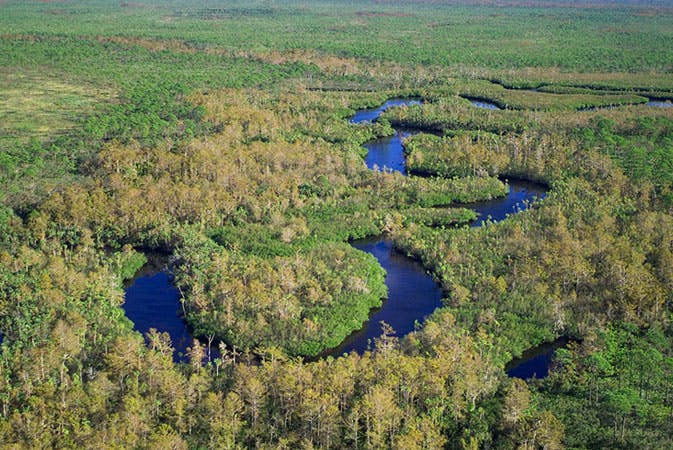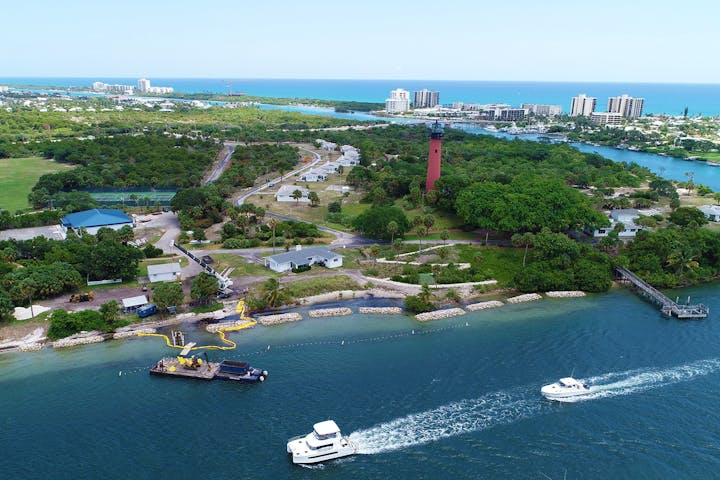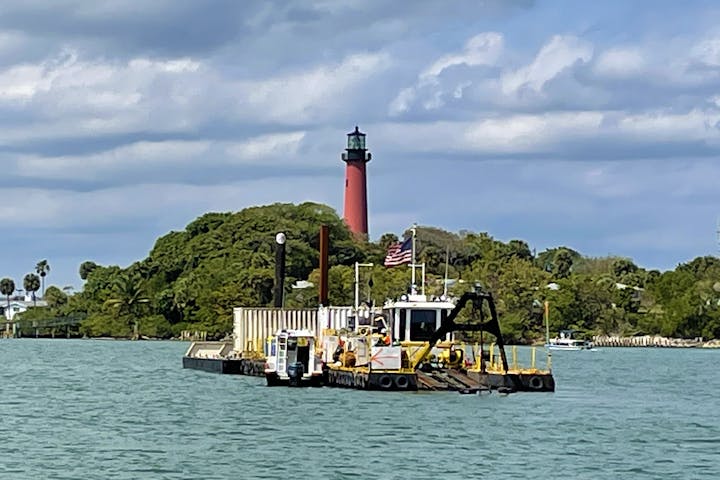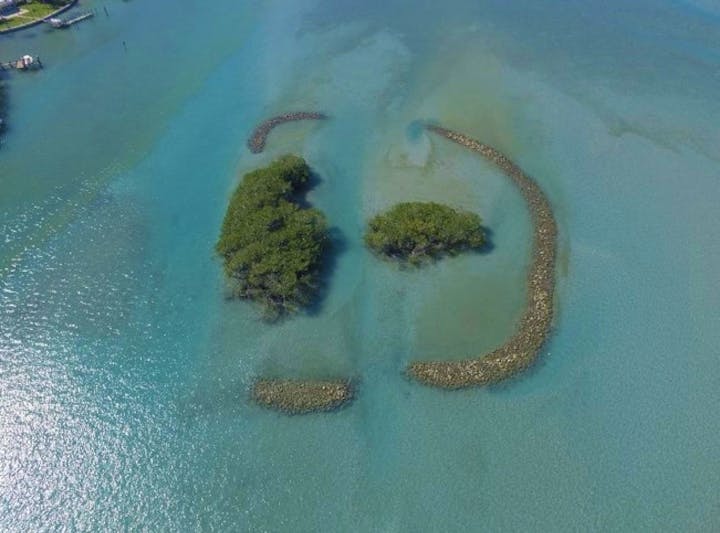Projects & District News
The Jupiter Inlet District monitors sediment movement and accumulation by conducting semi-annual hydrographic surveys of the inlet system and portions of the Loxahatchee River. The Florida Beach & Shore Preservation Act mandates that the Jupiter Inlet District bypass sand that migrates into the inlet system to downdrift beaches. Guided by an Inlet Management Plan created in partnership with the University of Florida and approved by the Florida Department of Environmental Protection (FDEP), the District conducts dredging projects that remove an annual average of 60,000 cubic yards of sand from the inlet’s sand trap and navigation channel for beach placement on beaches South of the Jupiter Inlet to counter erosion. The sand trap is a 6.58-acre depression located 1,000 feet West of the inlet mouth. Projects are permitted through our partners at the U.S. Army Corps of Engineers and Florida Department of Environmental Protection (FDEP) with strict environmental protocols and monitoring in place to protect sensitive sea turtle nesting and fisheries habitat, manatees, seagrass beds and oyster bars.
Per our charter, the Jupiter Inlet District also maintains the navigational channels in the Loxahatchee River’s Central Embayment, and the North, Northwest and Southwest forks with authority to deepen, widen or make changes necessary to facilitate small-craft navigation. Channel markers in the Main and South channels of the Loxahatchee River's Central Embayment, as well as the North, Northwest and Southwest forks, are maintained by the Jupiter Inlet District in the interest of public safety in navigation. The District also coordinates with the Florida Inland Navigation District (FIND) and U.S. Coast Guard, responsible for maintaining channel markers along the Intracoastal Waterway (ICW) that connects to the inlet system. Per the Loxahatchee River Management Plan adopted by the Commission, the District's work is focused on the restoration and preservation of natural lands and resources, particulary within the Northwest fork's Wild and Scenic River located in Jonathan Dickinson State Park.
The Jupiter Inlet District built and maintains the North and South jetties as critically important inlet infrastructure. Safety maintenance and repair inspections are conducted monthly by Taylor Engineering, and structural elements and maintenance inspections of the jetties and armoring are conducted annually. The North Jetty extends 800 feet and the South Jetty is 1,200-feet in length.
The District also manages the Dredged Material Management Area (DMMA), a 2-acre sand storage site located by the District office that can house 10,000 cubic yards of sediment from channel maintenance dredging of the Main and South channels in the Central Embayment. Access to these sand resources can be provided to our partners for public projects as approved by the Commission.
The northernmost portion of Jupiter Beach Park, included in the Jupiter Inlet District’s chartered responsibilities, is operated through a lease agreement with the Palm Beach County Parks and Recreation Department. It is part of the larger system of public parks managed by the County that border the Jupiter Inlet to the South, including Jupiter Beach Park and DuBois Park.
All projects approved by the Commission align with our charter, all applicable state statutes and are focused on the preservation and protection of important natural resources. For more information on any District project, call (561) 746-2223.



.jpg?ixlib=rb-1.1.0&or=0&w=720&h=720&fit=max&auto=format%2Ccompress&s=7c9b506fa697249615bc2394d8fa922e)



